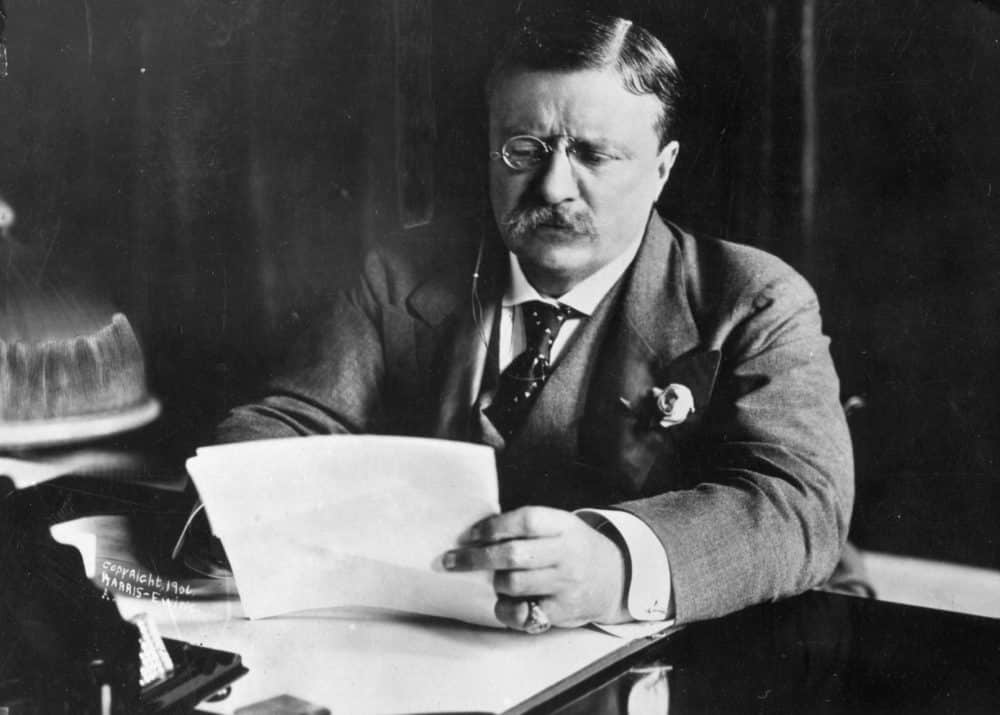Historical Figures : Theodore Roosevelt
“Believe you can do it and you are already halfway there” Theodore Roosevelt
Theodore Roosevelt was born on October 27, 1858 into a wealthy New York family. He was frail and sick when he was a child. As a teenager, he followed a gymnastics and weightlifting program to develop his strength.
At the age of 23, he was elected to the New York State Assembly and served two terms (1882-84).
At 3R Consultants, we wanted to introduce you to this historical figure because of his great leadership, his desire to change his environment and his strong taste for action. These are qualities inherent to responsible jobs that are developed on a daily basis. Our firm accompanies you at your own pace towards the development of your leadership and your own qualities through coaching, training, conferences, teambuildings, etc….
The young Republican politician Theodore Roosevelt became the 26th President of the United States in September 1901, after the assassination of William McKinley. He brought new energy to the White House and won a second term in 1904. Roosevelt confronted head-on the fierce struggle between management and workers and became known as the great “trusted breaker” for his efforts to break industrial combinations under the Sherman Antitrust Act.
He was also a dedicated defender of nature, reserving some 200 million acres for national forests, reserves and wildlife sanctuaries during his presidency. In the field of foreign policy, Roosevelt won the Nobel Peace Prize for his negotiations to end the Russo-Japanese war and spearheaded the construction of the Panama Canal. After leaving the White House and going on safari to Africa, he returned to politics in 1912, organizing a failed presidential race to lead a new progressive party.
Politically active to the end, Roosevelt died in his sleep on January 6, 1919, in his family home in Oyster Bay, New York, at the age of 60.
Roosevelt was a man of action, you can observe him all along his journey:
– For example, in 1898, at the beginning of the Spanish-American War, Roosevelt, who was then Assistant Secretary of the American Navy, left his post to become Colonel of the first American volunteer cavalry. He leads them courageously to victory and is treated as a hero when he returns.
– In 1903, he helped Panama secede from Colombia to facilitate the start of construction of the Panama Canal, which he later described as his greatest achievement as President.
– To prepare the United States for its expanded role on the world stage, Roosevelt sought to strengthen the country’s defences and, at the end of his presidency, he had transformed the American navy into a major international force at sea. Outside the Western Hemisphere, he led negotiations to end the Russo-Japanese war in 1904-1905, winning the Nobel Peace Prize for his efforts
– Roosevelt noting that his successor, President Taft, whose candidacy he had pushed by not running for re-election, had not followed through on the promised agenda of progressive reforms, but instead sided with the more conservative side of the Republican Party. Furious, Roosevelt campaigned against Taft for the Republican nomination in 1912; when this effort failed, he and his supporters rushed to form the Progressive Party, popularly known as the Male Moose Party.
– After his terms, Roosevelt was one of the first supporters of American entry into the First World War, which broke out in Europe in 1914, and he strongly criticized Wilson’s policy of neutrality at first.


